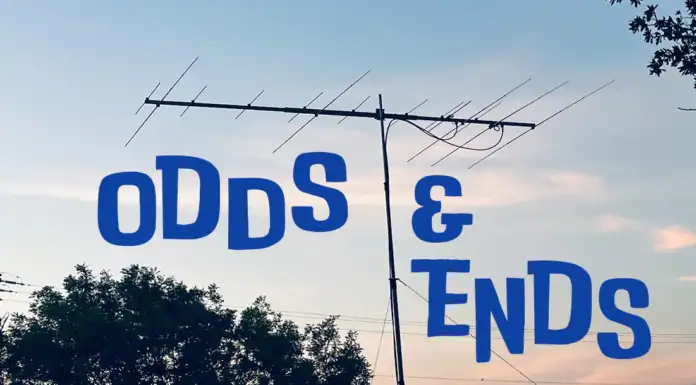I got up at o’dark thirty Saturday October 10 to tune in live to the Radio Society of Great Britain’s 2020 Online Convention. And, it was well worth it. What attracted me was a number of presentation topics that addressed my current operating passions.
VHF Propagation — G3YLA
The first (on at 5 AM Central Saturday morning) was Jim Bacon, G3YLA, discussing “VHF Propagation and Weather.” I had seen his 2018 presentation titled “Sporadic E Revisited” and found that it offered fresh insight into the most addictive type of propagation on six meters.
In his 2020 presentation he built on his previous information and added quite a few new layers toward understanding what’s going on with Sporadic E, chiefly around the jet stream. Here’s a screenshot from the presentation that shows his model for Sporadic E.
He also provided insight into a new website he’s developing to help predict VHF propagation openings at propquest.co.uk. I’m going to spend some time with this site to better understand how to put it to use. The screenshot below is one of the maps centered around my location. Here’s the link to the YouTube video of his presentation G3YLA VHF Propagation and Weather.
The Magic of Six Metres — G4IFX
The next session of interest was by Chris Deacon, G4IFX, providing an introduction to the Magic Band. Since I’ve made a presentation on the same subject recently, as part of the ARRL’s Learning Network, I wanted to see if there were any other topics or approaches that I should be taking in my own work. Didn’t see much new. But it was an excellent presentation followed by lots of questions. Here’s the link to the YouTube video G4IFX The Magic of Six Metres.
Ionoscatter on 50 and 144 MHz — OZ1RH
Following that, I tuned into Palle Preben-Hansen, OZ1RH, and a solid discussion of ionoscatter. I was hoping to get hints on how best to use WSJT-X and the ISCAT mode. But this presentation focused primarily on the underlying theory and how best to point antennas. Here’s the link to the YouTube video OZ1RH Ionoscatter on 50 and 144 MHz.
VHF/UHF Radios for Contesting and DXing — G8DOH
I’ve attended Rob Sherwood’s, NC0B, sessions on receiver performance at the Dayton Contest University. His published listing of receiver test data is the sine qua non of HF receiver performance. However, since I’m now almost totally involved in VHF-UHF work, it doesn’t seem quite relevant to my operating. That’s where this session provided by Alwyn Seeds, G8DOH, comes into play. It was absolutely fascinating to get his perspective on the rigs that work at VHF and those that don’t.
Alwyn runs a VHF contest station in North Oxfordshire, England, and it appears he has a great deal of test equipment, radios, and expertise. What I liked, too, was that he compared not only VHF rigs but HF rigs using high performance transverters. This is really in line with what amateurs are actually deploying on the VHF bands. He further took considerable effort to compare the Icom IC-9700 to the Elecraft K3 with a transverter. Here’s one of his charts on the receiving side of things.
This listing shows several VHF rigs on two meters. He has a separate listing of HF transceivers with a high performance transverter. What I particularly like about this slide is that my IC-9100 and IC-910 are ranked at the top of the list. Woo hoo!
He also looked very closely at the transmitting side of these rigs with particular attention to the radiated noise and spurious emissions. He has a similar chart for the HF rigs with transverter. He was keen to point out which rigs should and should not be used with linear amplifiers due to the extra noise generated. He used Great Britain requirements in his measures which means an upper limit of 400 watts output. I can’t imagine what a kilowatt or more amplifier might add to the issues. Here’s that chart.
I felt this session was extremely helpful for the VHF operator as it zeroed in on exactly how we’re operating on these bands and the rigs we’re using. You can find the YouTube video at G8DOH VHF-UHF Radios for Contesting and DXing.
I highly recommend you watch this one. It’s extremely valuable and there’s so much more to learn than the snippet I’ve provided here.
Thoughts
Please note that I included the screen shots above as samples to pique your interest in these fabulous presentations. Please follow the links to see the presentations firsthand and to gain a full understanding along with the detailed information provided by the presenters.
Thanks RSGB for putting your convention online and for allowing me to tune in. I guess this is one more advantage of carrying on while staying at home.











[…] RSGB 2020 Online Convention VHF Videos. Great videos on six meter sporadic E and on radios for VHF contesting. […]